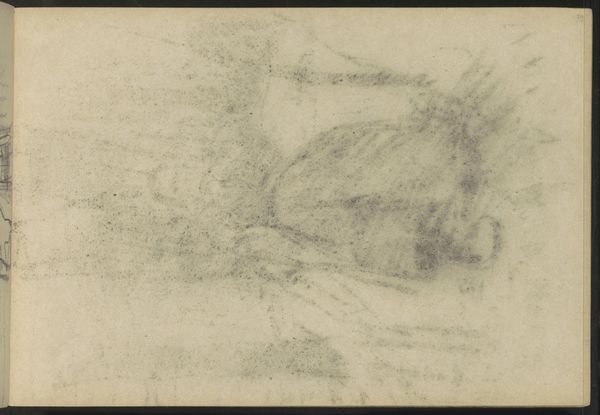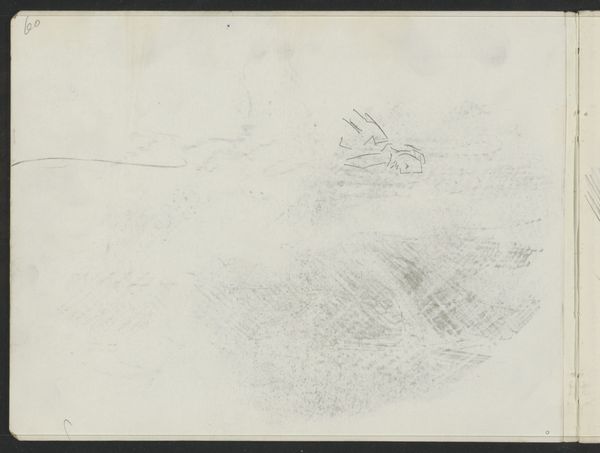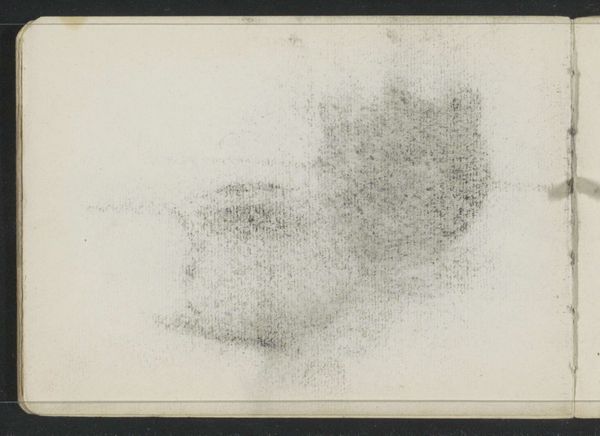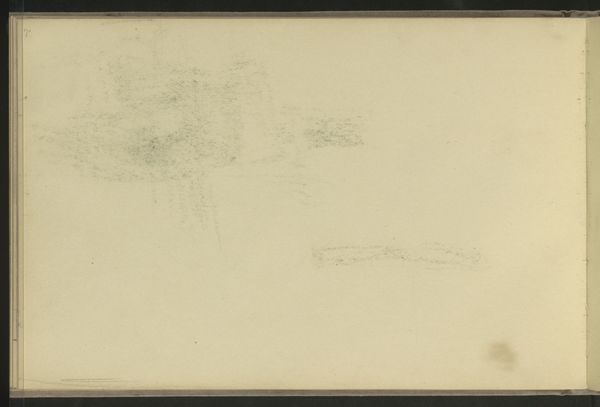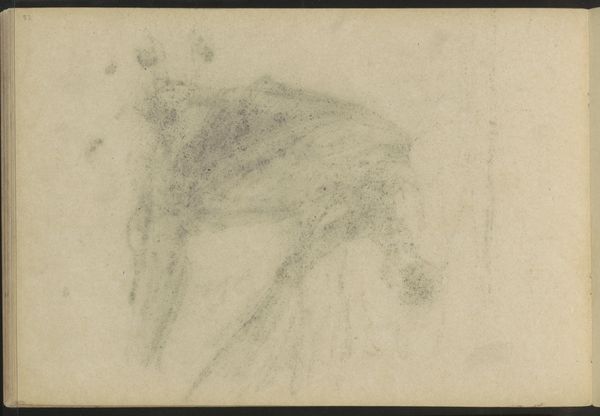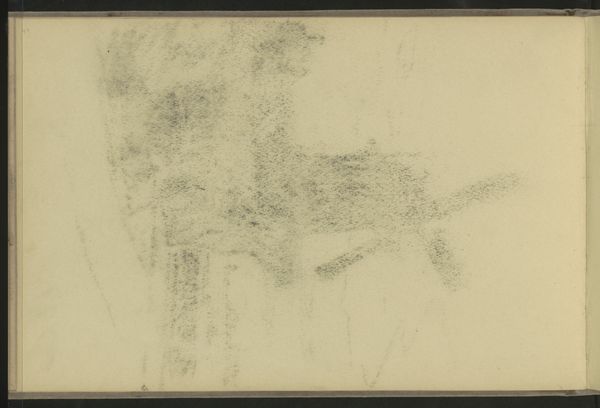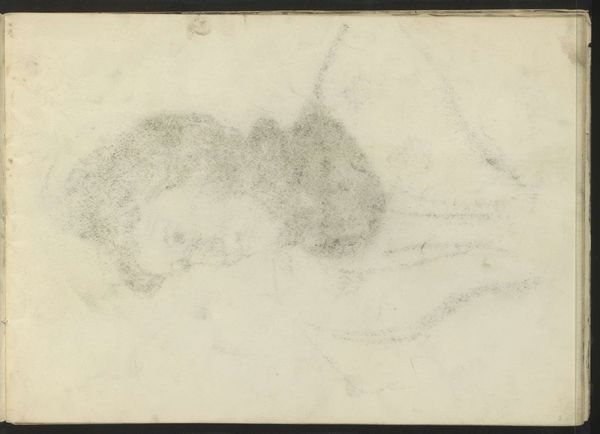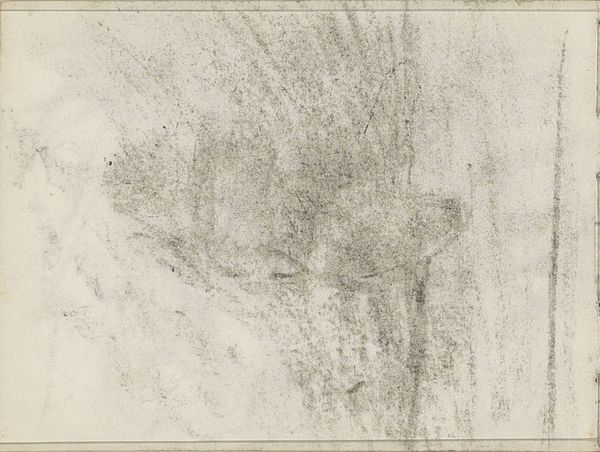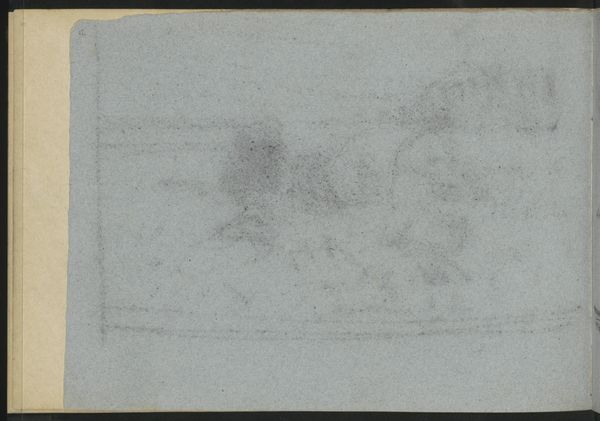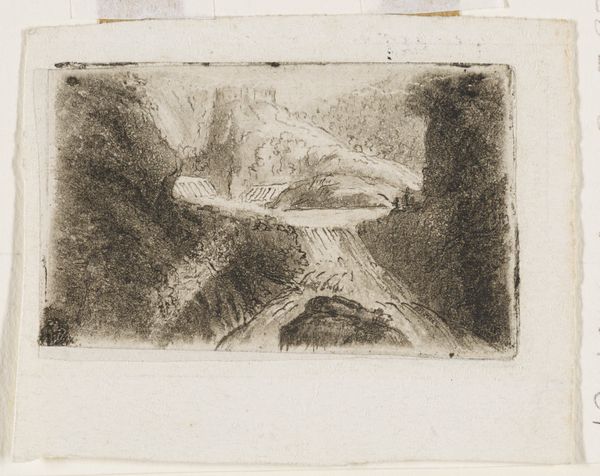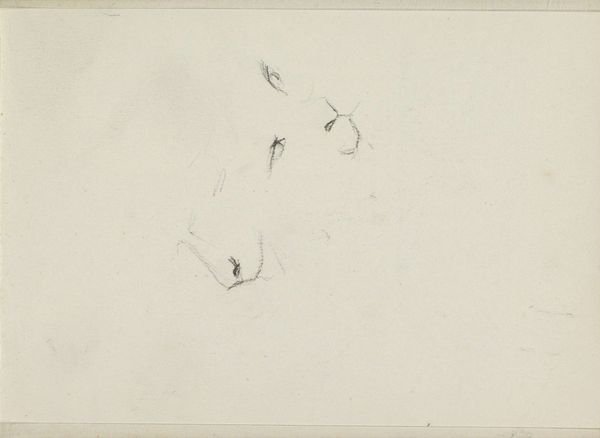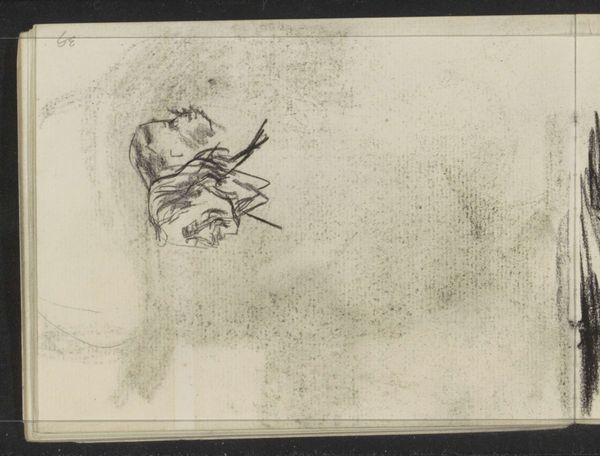
drawing, paper, pencil
#
portrait
#
drawing
#
pencil sketch
#
paper
#
pencil
Copyright: Rijks Museum: Open Domain
Curator: Before us is "Abklatsch van de tekening op pagina 60," a pencil drawing on paper crafted between 1901 and 1907 by Willem Witsen. It's part of the Rijksmuseum collection. Editor: It feels incredibly fragile, almost ghostly. The lightness of the pencil work against the paper makes it feel more like a fleeting impression than a finished portrait. Curator: Interesting choice of words, given that "Abklatsch" roughly translates to "blot" or "smudge". It's an impression, yes, likely transferred from another page within the artist’s sketchbook, evidence of the studio as a place of reproduction and reworking, a site of labor. Editor: And a memory of that labor. I’m immediately drawn to what appears to be a face emerging from the smudges. It’s hauntingly familiar, yet obscured. Faces carry so much historical weight, embedded with emotions and societal meaning through time. Who is this individual? Curator: Without more context, we can only speculate about the sitter's identity. However, focusing on Witsen’s methods tells us about art production at the turn of the century. Sketchbooks allowed constant sketching, the easy transfer from one page to the next acting almost like early photocopying. The paper itself, its tooth and receptivity to pencil, would have dictated the textures. Editor: Still, I can't ignore the evocative power of a face—even one so lightly rendered. It resonates with the era’s fascination with the unconscious, the ephemeral. A ghostly presence emerging on the page mirrors a societal shift toward the interior, psychological landscape. The very vagueness makes it a potent symbol of unseen emotions. Curator: I’d counter that vagueness opens many channels. Look at the quality of the paper. Is it cheap? Is it expensive? Did Witsen use readily-available pencils, or more specialist tools that indicated a degree of financial capital? These choices say a lot about an artist operating in Amsterdam at that point. Editor: Ultimately, I see a reminder of our shared human experience. These faint lines capture a person lost to time yet preserved through art. It stirs a deep emotional connection that resonates beyond material concerns. Curator: For me, it shows that art isn’t about the single gesture, but in labor and reproduction. The accident creates as much as it destroys. Editor: A compelling insight, offering us both tangible and intangible threads to contemplate.
Comments
No comments
Be the first to comment and join the conversation on the ultimate creative platform.
